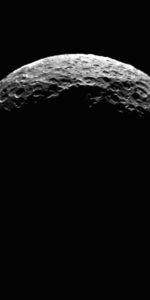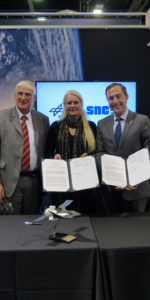
The launch of NASA’s multi-billion dollar James Webb Space Telescope (JWST) has slipped from October 2018 to sometime between March and June 2019, following a recently conducted schedule assessment by NASA which determined integration and testing of the spacecraft’s bus and sunshield at Northrop Grumman in Redondo Beach, California will take longer than expected.
“The change in launch timing is not indicative of hardware or technical performance concerns,” assured Thomas Zurbuchen, associate administrator for NASA’s Science Mission Directorate at Headquarters in Washington. “Rather, the integration of the various spacecraft elements is taking longer than expected.”
When it does launch, the 21-foot (6.5-meter) diameter JWST will ascend from the European Space Agency’s launch site at the edge of the Amazon rainforest in French Guiana, South America, leaving Earth aboard a 171 foot tall Ariane 5 rocket.

Unlike the Hubble Space Telescope, which operates in orbit around Earth and is (or was) accessible to NASA’s astronauts, Webb will operate at a special “gravity island” called Lagrange Point 2 (L2), one million miles away, where there is nobody to make repairs if something breaks or does not work, so NASA is not taking any chances.
“Webb’s spacecraft and sunshield are larger and more complex than most spacecraft. The combination of some integration activities taking longer than initially planned, such as the installation of more than 100 sunshield membrane release devices, factoring in lessons learned from earlier testing, like longer time spans for vibration testing, has meant the integration and testing process is just taking longer,” said Eric Smith, program director for the James Webb Space Telescope at NASA Headquarters in Washington.
“Considering the investment NASA has made, and the good performance to date, we want to proceed very systematically through these tests to be ready for a Spring 2019 launch,” he added.
The tennis-court sized sunshield was fully installed in August, and scheduled to be followed soon after by deployment tests to verify they will unfold as intended once in space.
The sunshield is critical in preventing background heat from the Sun, Earth and Moon from interfering with the telescope’s sensitive infrared instruments; JWST simply cannot science without it.
The five sunshield membrane layers are each as thin as a single human hair, yet can reduce the temperatures between the hot and cold sides of the JWST by an incredible 570 degrees Fahrenheit.
That’s equivalent to SPF 1 million sunblock.
“Existing program budget accommodates the change in launch date, and the change will not affect planned science observations,” says NASA, adding, “all the rigorous tests of the telescope and the spacecraft to date show the mission is meeting its required performance levels.”
Meanwhile, testing of the telescope and science instruments continues to go well and on schedule at Johnson Space Center in Houston, Texas, where it is undergoing 93 straight days of around-the-clock thermal vacuum testing in “Chamber A”, a U.S. National Historic Landmark and the largest high-vacuum, cryogenic-optical test chamber in the world.
In order to detect the infrared light from faint and very distant objects, the telescope needs to operate in an environment of -370° F (-223° C, or 50 Kelvin), so NASA is testing it under those conditions on the ground to verify its performance as an end-to-end system and prove its sensitive optics and instruments will perform as planned in space.

The testing was done over the summer, and on Sep 27 engineers began to warm Chamber A to bring the JWST back to room temperature before taking it out of the giant test chamber in Oct.
“Engineers will perform the warming gradually … to ensure the safety of the telescope, its science instruments, and the supporting equipment,” said Randy Kimble, an integration and test project scientist for the Webb Telescope at NASA’s Goddard Space Flight Center in Greenbelt, Maryland. “Once the chamber and its contents are warmed to near room temperature, engineers will begin to pump gaseous nitrogen into [the chamber] until it is once again at one atmosphere of pressure (at sea level) and no longer a vacuum.”
It will be shipped to Northrop early next year for final assembly with the sunshield and become the completed JWST observatory, at which point it will undergo more tests during what is called “observatory-level testing”, followed by flight and deployment testing on the whole observatory before being packed and shipped to its launch site in South America for flight in Spring 2019.
.
FOLLOW AmericaSpace on Facebook!
.
Missions » James Webb Telescope »





